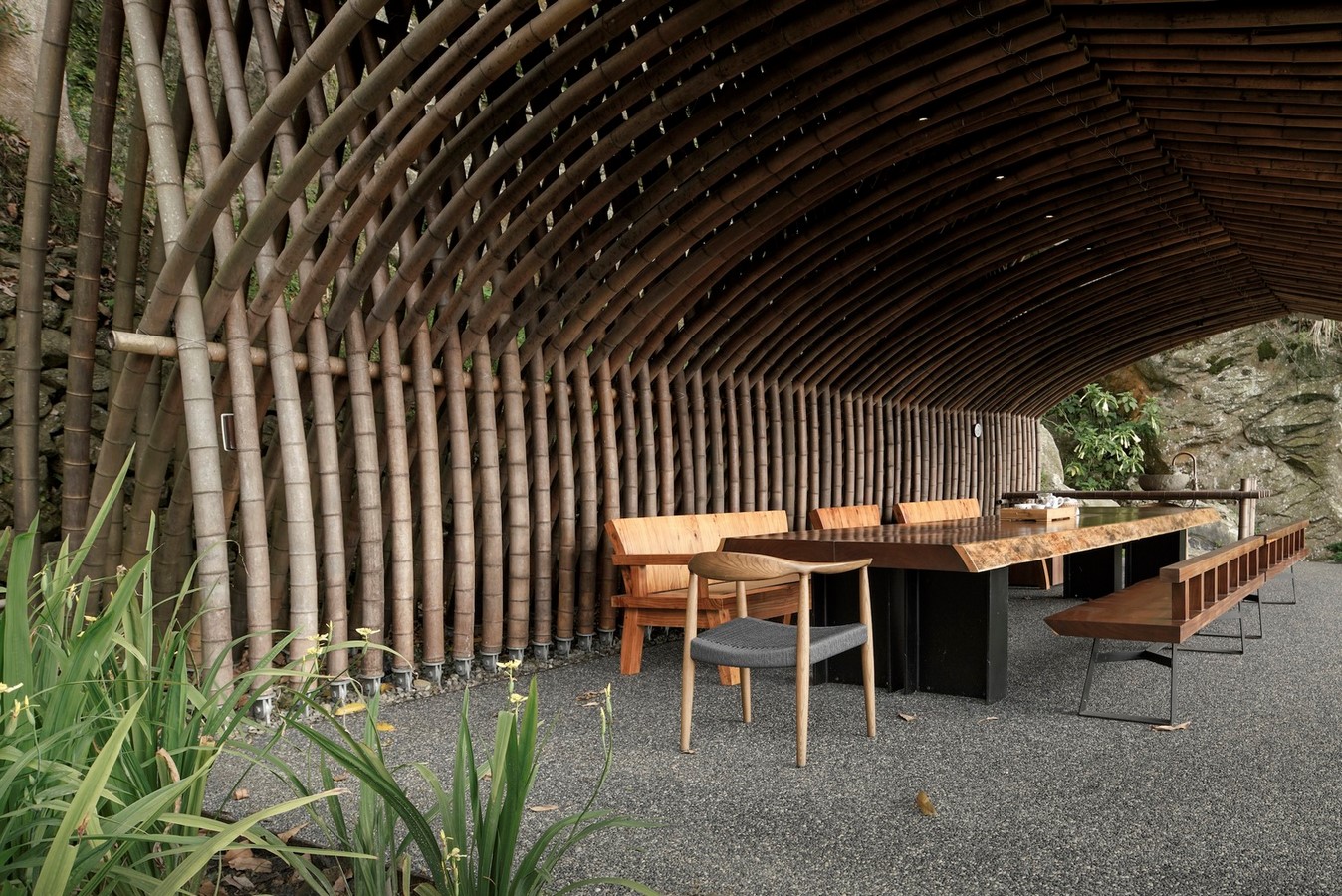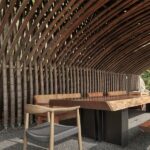Embracing Nature: Clear Water Tea House

A Sustainable Retreat in Harmony with Nature
Nestled in the picturesque landscapes of Nantou, China, the Clear Water Tea House stands as a testament to sustainable architecture and harmonious living. Designed by Behet Bondzio Lin Architekten, this unique teahouse embodies the principles of adaptability, sustainability, and holism, seamlessly blending with its natural surroundings.

Embracing Adaptability
Perched on the edge of a slope at 700 meters altitude, the Clear Water Tea House harnesses the resilience of bamboo, a versatile and sustainable building material. Bamboo’s rapid growth and inherent strength make it an ideal choice for the construction of the teahouse. Its flexible trunks can withstand intense winds and typhoons, while its natural properties provide protection from water and sun. Utilizing bamboo allows for quick assembly, with all joints tied using simple metal strings, reducing construction time to less than a month.

Sustainable Design
Bamboo’s abundance in Taiwan and its rapid growth cycle ensure a sustainable building process with minimal environmental impact. Traditionally smoked to enhance durability and resist termites, bamboo serves as a low-carbon footprint building material, offering longevity and resilience to the Clear Water Tea House.

Holistic Living
What sets the Clear Water Tea House apart is its holistic approach to design, celebrating the symbiotic relationship between architecture and nature. By utilizing materials found in its surroundings, the teahouse creates a shelter that invites guests to immerse themselves in the tranquility of nature. Tea ceremonies, integral to daily life and social gatherings, offer a deeper connection to nature, emphasizing the value of simplicity and mindfulness in consumption.

Respecting Nature
The design of the Clear Water Tea House reflects a deep respect for nature’s principles and processes. Careful consideration is given to aspects such as sun exposure, aeration, and microbiological interactions, ensuring a symbiotic relationship between the built environment and the natural world. By working in harmony with nature, the teahouse exemplifies the importance of preserving and protecting our natural surroundings for future generations.

In conclusion, the Clear Water Tea House serves as a beacon of sustainable architecture and holistic living, offering a sanctuary where guests can reconnect with nature and embrace the simplicity of life. As we navigate the complexities of modern existence, projects like the Clear Water Tea House remind us of the profound beauty and wisdom found in the natural world.























